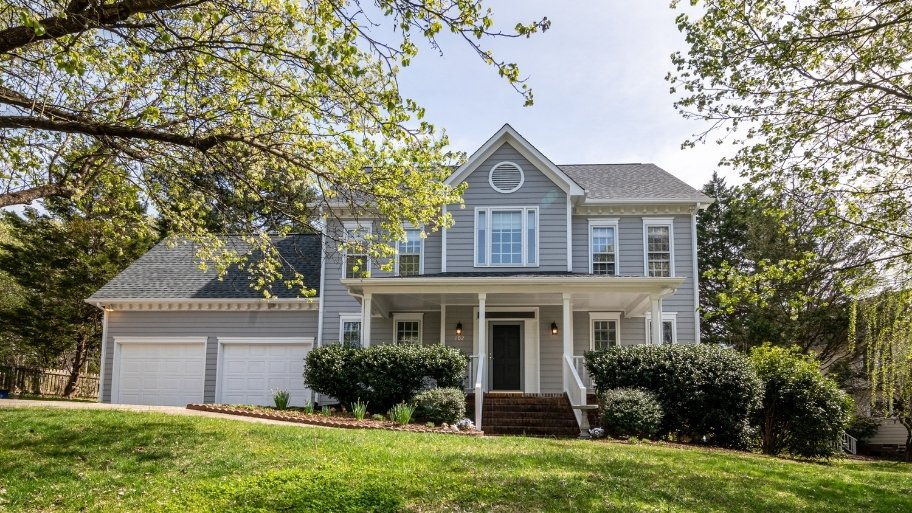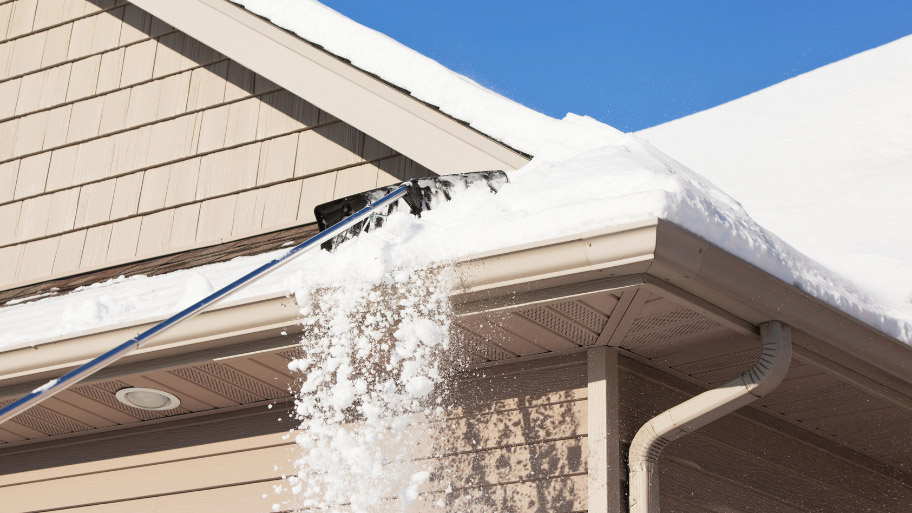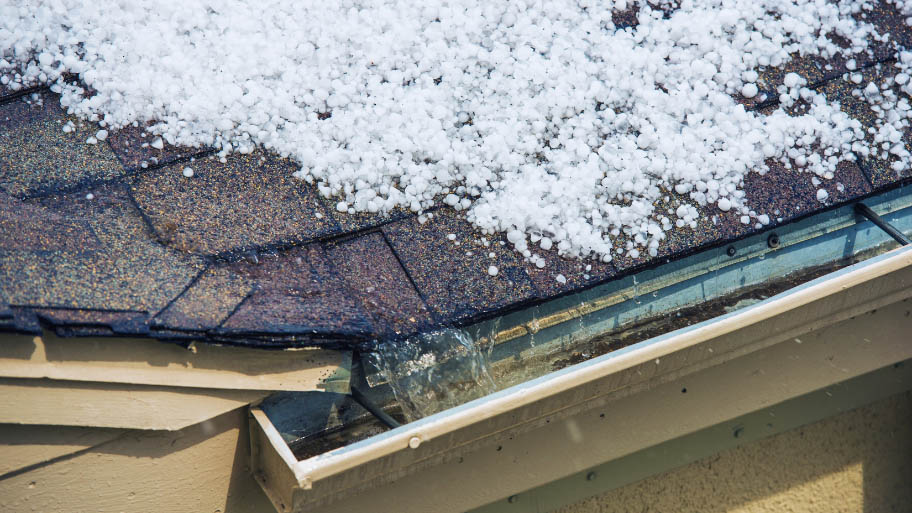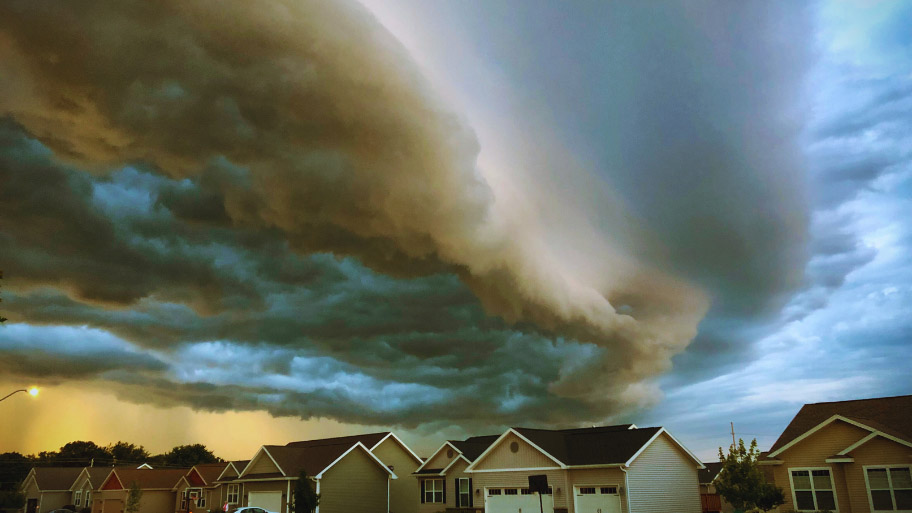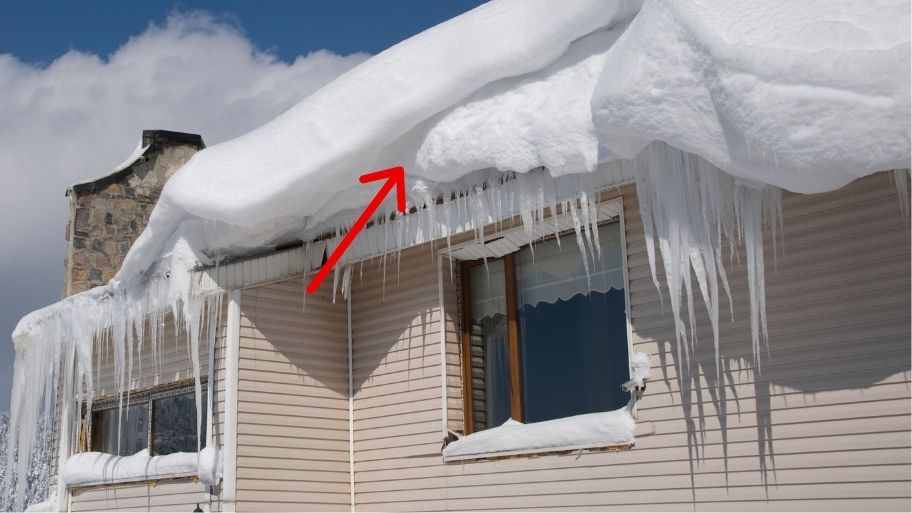
What Is an Ice Dam?
During the harsh Iowa winters, homeowners often face a hidden roofing threat—ice dams. An ice dam is a buildup of ice forming at the roof’s edge, often near the gutters.
Understanding how ice dams form is the first step toward effective ice dam prevention, helping homeowners in Iowa avoid costly roof damage.
It occurs when melting snow refreezes at the colder eaves instead of draining off the roof properly.
Over time, this buildup creates a barrier that prevents further melting snow from escaping, leading to water pooling behind the ice dam.
What Causes Ice Dams?
Ice dams don’t just appear because of cold weather—they form due to uneven roof temperatures.
When some parts of the roof are warm enough to melt snow while the edges stay cold, melted water refreezes along the eaves, creating a dam.
Several factors contribute to this imbalance:
Since these factors cause melt-freeze cycles, ice dams can develop even when temperatures stay below freezing. Understanding these causes helps explain why some roofs are more prone to ice buildup than others.
Effects of Ice Dams
Once an ice dam forms, the damage isn’t just limited to your roof—it can create serious structural and interior issues.
As trapped water builds up behind the dam, it seeps under shingles, leaks into ceilings, and weakens the home’s structure.
Here’s what homeowners in Ankeny, IA, and surrounding areas should watch for:
#1. Roof and Gutter Damage
Ice dams put extra weight and pressure on the roof’s edge, which can loosen shingles, bend gutters, or even cause them to detach. This damage increases the risk of leaks and costly repairs.
#2. Interior Water Damage
As melted snow backs up behind the ice dam, water can seep through the roof deck and into the attic. Over time, this leads to stained ceilings, weakened drywall, and insulation damage, which can be expensive to fix.
#3. Mold and Mildew Growth
Persistent moisture from leaks creates the perfect environment for mold and mildew inside walls and ceilings.
This doesn’t just cause property damage—it can also lead to health issues, especially those with respiratory conditions or allergies.
#4. Structural Issues Over Time
If left unaddressed, repeated ice dam formation can weaken wooden roof structures, compromising the home’s integrity.
The combination of moisture, freezing, and thawing can cause warped roofing materials, rotting beams, and long-term stability issues.
#5. Increased Energy Costs
Ice dams often indicate poor attic insulation or air leaks, forcing heating systems to work harder. This leads to higher energy bills in the winter, making ice dam issues cost homeowners in more ways than one.
Understanding these risks highlights why ice dam removal and prevention are crucial for homeowners.
In the next section, we’ll discuss the best strategies for preventing ice dams before they cause major damage.
How To Prevent Ice Dams
The most effective way to handle ice dams is to stop them from being formed in the first place.
Since ice dams develop due to uneven roof temperatures, preventing heat loss and ensuring proper drainage are key.
Here are the most effective strategies for ice dam prevention in Ankeny, IA, and surrounding areas:
Taking these preventive measures can protect you from costly repairs, water damage, and energy loss. But if an ice dam has already formed, the next step is to safely remove it before it causes further damage.
Ice Dam Removal Methods
Once an ice dam forms, removing it safely is crucial to prevent roof leaks, water damage, and costly repairs.
While waiting for removal, you can temporarily slow water intrusion by directing cold air at leaks from inside the attic—but this doesn’t eliminate the ice dam itself.
Below are safe and effective methods to get rid of ice dams for good.
Use a Roof Rake
A roof rake with an extended handle lets you pull snow off the roof from the ground, preventing melt-and-freeze cycles that make ice dams worse.
✅ Tip: Use a plastic or rubber-bladed rake to avoid damaging shingles.
The Pantyhose Method
A quick DIY trick to melt ice dams is to fill a pantyhose leg with calcium chloride ice melt and lay it perpendicular to the ice dam. As it melts through the ice, it creates a channel for trapped water to escape.
❌ Do NOT use rock salt—it can corrode gutters and damage shingles.
Hire a Professional for Safe Removal
For stubborn or thick ice dams, professional removal is the safest and most effective solution.
Roofing experts use steam machines to gently melt ice without harming shingles.
If ice dams continue forming, an expert can inspect your attic insulation and ventilation to prevent future problems.
When To Call a Professional 👷♂️
While some ice dam removal methods can be handled on your own, there are times when hiring a professional is the most effective and safest choice.
Attempting DIY removal in the wrong way—like using sharp tools or improper chemicals—can damage your roof and lead to costly repairs.
When to Seek Expert Help:
- Thick or stubborn ice dams ❄️ – If the ice is too dense or widespread, professional steam removal is the safest method.
- Water leaks inside your home 💧 – If you see ceiling stains, peeling paint, or moisture buildup, it’s time to act fast before damage worsens.
- Roof damage or sagging gutters 🏠 – Ice dams can loosen shingles, bend gutters, and weaken structural integrity.
- Recurring ice dam problems 🔄 – If ice dams keep coming back every winter, an expert can inspect insulation, ventilation, and roofing issues to find a long-term fix.
Final Tips for Iowa Homeowners 🌨️
Iowa’s harsh winters mean ice dams can be a recurring issue, but taking preventative measures can reduce risks and costly repairs. Here are a few final tips for homeowners in Ankeny, IA, and nearby communities:
✅ Schedule a Roof Inspection Before Winter – A professional check-up before heavy snowfall can catch insulation and ventilation issues early.
✅ Keep Gutters Clean – Clearing out leaves and debris in the fall ensures proper drainage when the snow melts.
✅ Remove Excess Snow After Storms – Using a roof rake can help prevent excessive buildup and reduce the chances of ice dam formation.
✅ Check Attic Insulation – Poor insulation contributes to heat loss, which is a primary cause of ice dams. If your attic feels warmer than the rest of your home, you may need an upgrade.
✅ Act Quickly if Ice Dams Form – If you spot early signs of ice dam damage, addressing the issue before leaks start can save thousands in repairs.
By staying proactive, homeowners in Iowa can protect their roofs and avoid the headaches of winter-related damage.

About the Author
Joe Burkhart, the driving force behind JB Roofing, has been a trusted roofing expert in Ankeny, IA, since 2006. Joe’s passion for quality craftsmanship and personalized service comes from over 20 years of hands-on experience, starting his journey in the roofing industry back in the early 1990s. JB Roofing is more than just a business to Joe—it’s a reflection of his commitment to providing reliable, long-lasting roofs that protect homes and families across Iowa.

